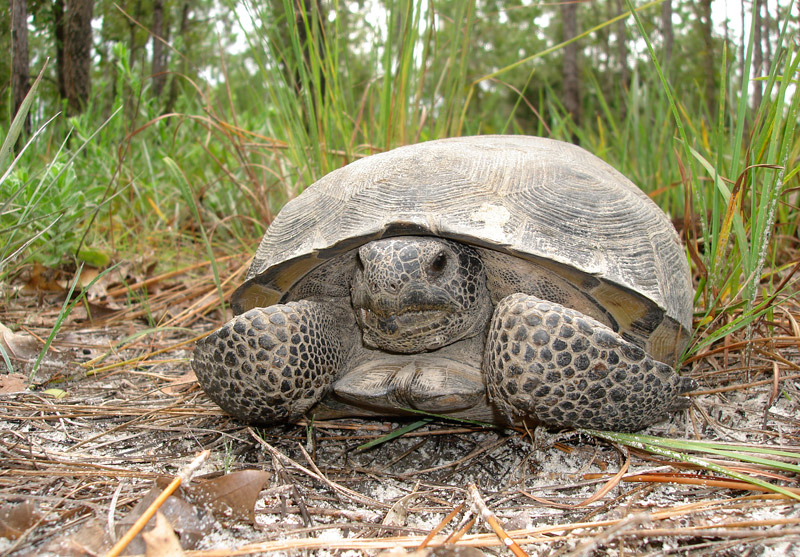FWC EO extends temporary deviations to ensure gopher tortoises find new homes
In November 2021, the FWC issued Executive Order (EO 21-27) authorizing temporary deviations from the Gopher Tortoise Permitting Guidelines (Guidelines). A recently issued Executive Order (EO 22-06) extends many of the provisions of EO 21-27 but removes deviations for on-site relocations and temporary placements on public lands. These temporary changes address the current high demand for placements at gopher tortoise recipient sites. The Executive Order, which is now in effect, does not provide any blanket authorizations nor does it reduce or eliminate the need for permitting. The EO provides staff the ability to deviate from the Guidelines under the circumstances outlined in the EO. All approved alternatives under the EO will be temporarily authorized by the FWC as a permit condition. Any activities occurring without a permit from the FWC that impact tortoises or their burrows may be a violation of state law.

Permitting for the relocation of gopher tortoises from development sites is one of many conservation tools used to achieve the objectives of the Gopher Tortoise Management Plan. The suite of conservation actions provided in the Management Plan have worked successfully to minimize the loss of tortoises, increase and improve tortoise habitat, restore depleted populations, and maintain the gopher tortoise’s function as a keystone species. The Gopher Tortoise Permitting Guidelines are a key component of the Management Plan and govern the relocation of tortoises from lands slated for development or other projects that may impact tortoises or their burrows.
The permitted relocation of all gopher tortoises from development sites has been required since 2008, when the gopher tortoise was listed as state-Threatened. The relocation program has been tremendously successful. The program is a market-based system where landowners agree to place a permanent conservation easement over their land with land management requirements to provide for higher quality gopher tortoise habitat. The easement and management conditions create the space and habitat where tortoises can be safely relocated. To date, 47 Long-term Protected Recipient Sites conserving nearly 77,000 acres of habitat have been placed under a perpetual conservation easement and permitted to receive gopher tortoises.
Permitting for development sites has increased over the past few years, increasing the demand for recipient site capacity. The FWC has been working diligently with landowners to increase capacity for relocations and expects to have more lands enrolled in the coming weeks.
The Executive Order supports implementation of the Guidelines to protect the health and safety of tortoises while ensuring long-term success of the program. The EO is in place for 60 days, beginning on February 16, 2022. The need to extend the Order, and the temporary provisions provided therein, will be evaluated towards the end of this 60-day period. All permit applications and associated projects will be reviewed individually and any deviations from the Guidelines will be considered on a case-by-case basis, depending on the project’s specifications, the site-specific need, and the availability of gopher tortoise reservations or recipient site capacity at that time.

The EO temporarily reduces mitigation fees for relocation to recipient sites that have enforceable protections, but which may not be under perpetual conservation easement. The EO also extends the ability to move tortoises to recipient sites more than 100 miles north or south of their original location. This option was already available in the Guidelines under certain circumstances. Finally, the EO authorizes staff to determine if other relocation options are warranted for individual project applications. The EO does not provide blanket authorizations, nor does it waive existing rules.
The Executive Order is a proactive step that allows for the safe and humane relocation of tortoises while more long-term recipient sites complete the permitting process.

